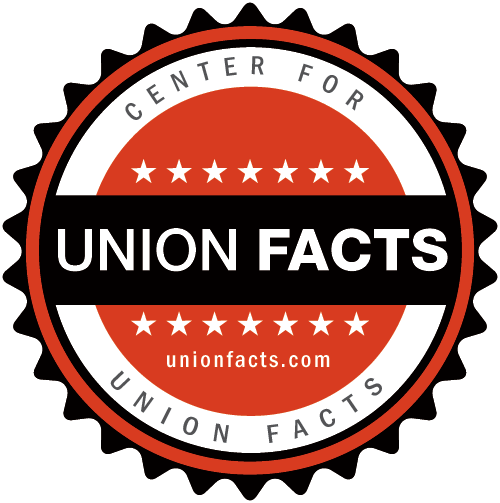Bricklayers, Local 6
Basic Information
Local 6
Financial Information
Basic Financials
| Total Assets | $324,786 |
| Total Liabilities | $0 |
| Total Income | $108,243 |
| Total Spent | $171,581 |
Total Assets Trend
Assets (Change from previous report)
| Cash | $321,839 (-16.4%) |
| Accounts Receivable | $0 (0.0%) |
| Investments | $0 (0.0%) |
| Fixed Assets | $2,947 (0.0%) |
| Treasury Securities | $0 (0.0%) |
| Other Assets | $0 (0.0%) |
| Loans Receivable | $0 (0.0%) |
Liabilities
| Loans Payable | $0 |
| Accounts Payable | $0 |
| Other Liabilities | $0 |
| Mortgages | $0 |
Income
| Dues | $107,493 |
| Per Person Tax | $0 |
| Investments | $0 |
| Supplies | $0 |
| Loan Repayment | $0 |
| Interest | $0 |
| Dividends | $0 |
| Rents | $0 |
| Fees and Fines | $0 |
| Loans Obtained | $0 |
| Other Receipts | $750 |
| Affiliates | $0 |
| Members | $0 |
| Reinvestments | $0 |
| All Others | $0 |
Source: Office of Labor Management Standards
Year Covered: 2021 • Last Updated: June 12th, 2023
Spending
Spending Overview
Spending Breakdown
| Representational | $0 (0.00%) |
| Political Activities and Lobbying | $0 (0.00%) |
| Contributions, Gifts, and Grants | $744 (0.43%) |
| General Overhead | $0 (0.00%) |
| Union Administration | $0 (0.00%) |
| Strike Benefits | $0 (0.00%) |
| To Union Officers | $1,440 (0.84%) |
| To Union Employees | $0 (0.00%) |
| Education | $0 (0.00%) |
| Fees | $895 (0.52%) |
Search All Spending
Source: Office of Labor Management Standards
Year Covered: 2021 • Last Updated: June 12th, 2023
Membership
Membership Trend
| Year | Members |
|---|---|
| 2002 | 403 |
| 2003 | 401 |
| 2004 | 390 |
| 2005 | 392 |
| 2006 | 390 |
| 2007 | 360 |
| 2008 | 353 |
| 2009 | 340 |
| 2010 | 344 |
| 2011 | 329 |
| 2012 | 330 |
| 2013 | 330 |
| 2014 | 320 |
| 2015 | 307 |
| 2016 | 309 |
| 2017 | 335 |
| 2018 | 340 |
| 2019 | 318 |
| 2020 | 319 |
| 2021 | 311 |
Source: Office of Labor Management Standards
Year Covered: 2021 • Last Updated: June 12th, 2023
Leaders & Salaries
Top Ten Highest Paid Leaders
| Name | Title | Total Compensation |
|---|---|---|
| JEREMIAH UNKLESBAY | SGT AT ARMS | $400 |
| JOSHUA MOSS | SEC/TREASURER | $360 |
| MICHAEL FERNANDEZ | PRESIDENT | $360 |
| THOMAS BALESTRA | VICE PRESIDENT | $320 |
| DAVID FETHER | SGT AT ARMS | $0 |
Source: Office of Labor Management Standards
Year Covered: 2021 • Last Updated: June 12th, 2023
Crime, Corruption & Racketeering
The Office of Labor-Management Standards (OLMS) conducts investigations to determine if violations of the Labor-Management Relations and Disclosure Act (LMRDA) provisions have occurred.
Investigations are initiated based on various sources such as complaints from union members; information developed by OLMS as a result of reviewing reports filed; information developed during an OLMS audit of a union’s books and records; and information obtained from other government agencies. Investigations may involve civil matters (such as an election of union officers) or criminal matters (such as embezzlement of union funds).
Corruption and Embezzlement Charges
| Type of Criminal Activity | Number of Instances |
|---|---|
| criminal charges | 1 |
| embezzlement charges | 2 |
| Guilty Pleas | 1 |
Some incidents may be accounted for in multiple categories.
Source: Office of Labor-Management Standards
Last Updated: April 8th, 2021
Financial Audits
The Office of Labor-Management Standards (OLMS) has responsibility under the Labor-Management Relations and Disclosure Act (LMRDA) to conduct audits to determine if unions are complying with the law.
OLMS uses a streamlined audit approach called the Compliance Audit Program (CAP) to audit local unions which utilizes specialized records review and investigative techniques to verify LMRDA compliance.
Source: Office of Labor-Management Standards
Last Updated: November 15th, 2016
Union Decertifications
Source: National Labor Relations Board
Case Activity Tracking System

